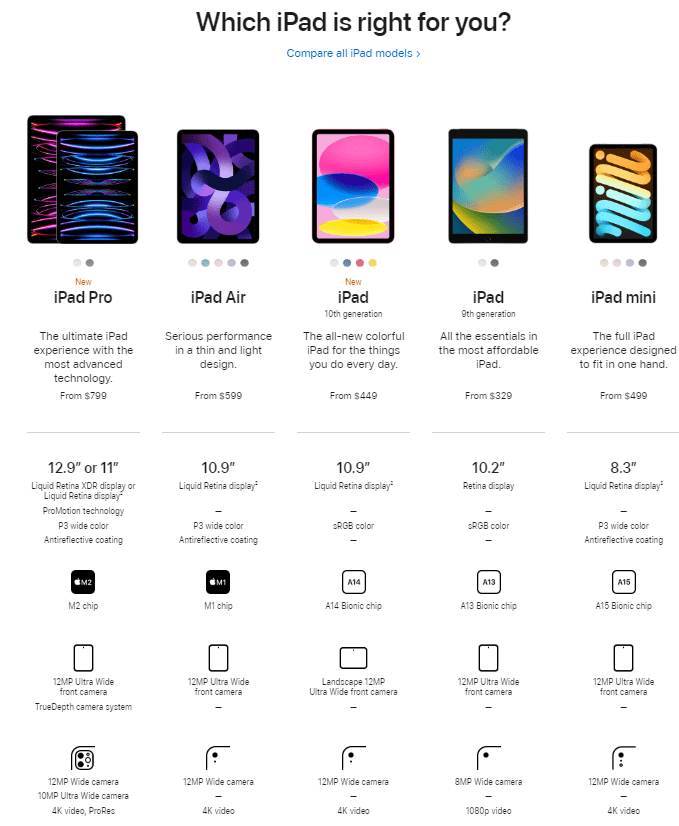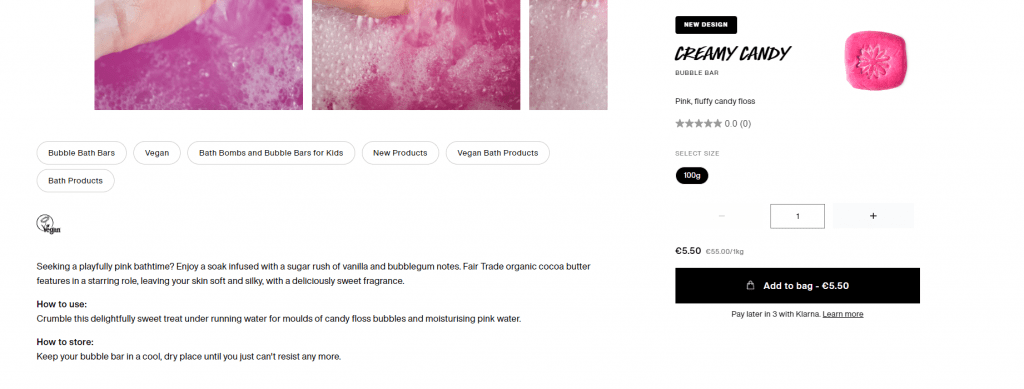Website copywriting: ten tips for increasing conversions

Keywords: copywriting, web copywriting, web copywriter, online store copywriting, landing page copy.
Web copywriting can make all the difference between a visitor and a potential customer. It plays a fundamental role for consumers in all stages of shopping, from awareness to decision-making and promotion.
Are you new to the world of copywriting? Welcome aboard! When you start to consider copywriting for your website content, it takes a big turn.
If you've got a business, you need a website. And if you've got a website, you need to convey a sense of quality and professionalism, at the same time as making yourself stand out from the competition. So how can you do it? It's a simple formula: beautiful design + technology + copywriting for the web. There's no point having an impressive design and the latest technology if your content fails to make an impact on your reader. We need to make our potential customers think "that's exactly what I need!", and make the all-important addition to their cart, or complete a form requesting your service.
You're probably wondering what this mysterious web copywriting concept involves. We can help with that!
Web copywriting: Everything you need to know!
- What is copywriting?
- Why is the web copywriting technique important?
- How do I apply web copywriting techniques?
- What does a web copywriter do?
- In which sections should web copywriting be used?
- Copywriting for online stores
- Web copywriting tools
- SEO copywriting: the "Google Gods" will love you!
- Examples of website copywriting
- Do you want the best copywriter for your website?
What is copywriting?
As we have explained in other articles on our blog, copywriting is a creative writing technique for attracting sales of products or services. In other words, it makes customers take actions to ultimately achieve those sought-after conversions.
Copywriting motivates the reader to take a specific action, whether it's to buy or download something, or set up a subscription, etc. Whereas traditional writing has the function of reporting or communicating, copywriting for websites uses calls to action and other strategies to optimise content.
Even if you weren't aware of it, you have probably seen or read many texts, programmes or posters where copywriting was used that prompted you to take a specific action that was predetermined for you to do.
In fact, if you open your email inbox, you will find some examples of copywriting for email marketing: promotions from restaurants, venues, catalogues, charity fundraising letters, sales literature for various products and services, etc.
Why is the web copywriting technique important?
Investing in web copywriting is a good way to stand out from the competition. Having a good website design helps you in two ways: both in terms of the audience you are targeting and for wooing Google (it will reward you with lots of love in the form of top results). Websites with valuable content contribute to exponentially improve your brand image at the company level.
Most website owners devote a lot of effort to designing the website but do not pay attention to good writing. Obviously, professional-looking design is important for the success of the website, but it is only half of the equation. Good copy is just as important, even more so in some cases.
Users tend to stick with their first impression, so it is crucial to show professionalism and authority in your website content. With the overload of information we have these days, readers can easily skip from one website to another if they cannot find the information they are looking for. And the chances are that they will never come back to your website if you haven't hooked them in the first place.
So, what's the formula for using copywriting? If you have a lot of time and energy to spare, you can learn to write good copy yourself. But, if you're not sure this will work, the most professional solution is to engage a specialised company that works with web copywriters in all sectors. A web copywriter (professional website writer) has all the experience and expertise needed to create copy that will not only be great for retaining visitors, but will also attract search engines and improve your Google rankings.
How do I apply web copywriting techniques?
All is fair in love and war, and when it comes to attracting users and converting them into customers, you need to know the best techniques. Below, we offer you the ten best techniques to make your text more effective when it comes to bringing traffic to your website.
10 web copywriting techniques to get traffic to your website:
1. Figure out who your copy will be aimed at:
Sales are made when a need is identified and met. Copy with a "hook" highlights that need and explains why the product or service presented is the best solution. But first, we need to know who we are talking to.
To determine who your target audience is, try creating various buyer personas. This involves some research, figuring out which groups of people use your product and identifying what they have in common. If you humanise the people you want to sell to, it will be easier to write better copy that adapts to their needs and expectations.
2. Create a close bond with the reader:
If you address the readers directly, you help to bridge the distance between them and the computer screen. Saying "when customers choose our sunscreen, they don't want to try another one" is not the same as saying "when you use our sunscreen, you'll never want to use another one!". You are addressing them directly.
3. Include quantifiable data:
If you provide credible and quantifiable data to customers in your copy, you will create a much closer bond with them. Why? Because they are very specific figures. Facts are convincing because they are verifiable and specific. But take care to do so as a support, not as the main message.
4. Emphasise the action to be taken:
If you want customers to take action, don't wait for the typical call to action at the end of the message. Instead, include phrases and action verbs throughout the text, especially using wording that makes readers visualise themselves fulfilling that need.
5. Create a simple and direct message:
Remember that you only have a few seconds from when the customer enters your website to convince them to stay. You won't achieve this if your wording is too long and complex. It is important to make what you do clear to visitors as soon as they enter.
6. Write with SEO in mind:
As technology evolves, web designers are learning more about how people search online, and search engine algorithms are constantly changing. Today, you can only appease Google if you have high quality content that is truly interesting to readers; search engine optimised (SEO)
7. Write engaging titles:
For every five readers who read a headline, only one stays to read the rest of the text, according to David Ogilvy, one of the most famous names in advertising and one of the few thinkers to forge this business after the 1920s. While this figure is not very encouraging, it speaks volumes about how important it is to give the title the prominence it deserves.
Once you have this in mind, you just need to create titles that:
- Tell the customer what they will get out of your product or service.
- Include the search keyword.
- Are clear and direct.
- Awaken emotions in the user.
8. Harness social influence:
Make the most of the customer reviews. We trust other people's recommendations more than the companies' own advertisements. In fact, other people's reviews are so influential that 94% of online shoppers say they avoid buying online if they have read a negative review.
Use this to your advantage and include a section on your website with customer reviews, or a page dedicated to "customer testimonials" or "success stories". Every now and then, add a not-so-good review, as this also humanises your brand and gives it more credibility.
9. Use a direct call to action CTA:
Well-written copy will be of no use if the customers don't know what to do next. In other words, they need a clear call to action that tells them what steps to take next.
Use phrases like:
- Get your free quote here (click).
- Buy new items here and now.
- Subscribe to our newsletter!
10. Use psychology to motivate readers:
Psychology and marketing go hand in hand. Cultivate the customers' fear of missing out if they do not take the action you want with phrases like:
- Today only: free shipping!
- There are only 3 units left!
- The sale ends in 5 hours!
When customers feel that a resource is scarce or limited, they feel the need to acquire it. It's a good way to spur them into action by creating a sense of urgency.
What does a web copywriter do?
A web copywriter is in charge of writing attractive and direct copy for websites. They research the style and voice of the brand they are working with in order to write content for the target audience that persuades them to purchase the company's services or products through the content on the website. The web copywriter's task involves searching for keywords, writing valuable content and reviewing their work to guarantee quality and accuracy.
An experienced web copywriter will know how to create a brand story and tell it through relevant and engaging content throughout the website. A good copywriter will highlight the value of what your company does.
The text must be:
- Persuasive: a unique, informative and persuasive text inspires the reader to take action. It can be anything, from subscribing to a newsletter to making a purchase. This is not a hard sell, quite the contrary!
- Easy to read: it is essential that the text is clear, concise and legible.
- Well-structured: headings, subheadings and their benefits can help capture the attention of people who are only skimming over a website. Considering that, on average, only 28% of the words on a page are read, and most of the time only 20%, every word counts.
In which sections should web copywriting be used?
To be effective, web copywriting should be applied to the home page, company information page, blog entry page and landing pages.
Remember that your website is your online sales machine and your copy is your sales representative.
Copywriting for the home page
Remember what we said before about grabbing a customer's attention in just a few seconds? The time has come! You never have a second chance at a first impression. The web copywriter must show off their full potential in this section of the website. This will determine whether the user stays or leaves. As a result, the home page must be where the web copywriter puts most emphasis. They have the task of grabbing the attention of customers quickly and giving them a reason to stay.
Create a home page that includes all the relevant information. This way, the user can scroll through the website and you can guide them to different sections in the menu bar for easy navigation.
Below the title, include a section explaining how you help your audience. Specify the customer's needs that can be solved by your services or products.
The key to writing and designing a website home page lies in the simplicity and clarity of the content. There is no need to complicate things with an overly "pompous" design.
Prioritise design with colours and fonts that complement each other to make the content easy to read. Also consider optimisation for smartphones, so the website can be read on all devices. And finally, don't forget to optimise the loading time. Our golden rule is to focus all efforts on clarity and simplicity above all else, especially for a website. Your potential customers want to see their needs met by your products or services, not a futuristic web design with no relevant information
Copy for the about us page
In the section where you talk about your brand and your team, you should include a short section communicating who you are, your values as a brand and how you can help the potential customer. You can include some personal details that help customers get to know you a little more and that humanise the brand.
Copy for blog posts
Blog posts with search engine optimised (SEO) content generate incoming traffic to your website. The biggest challenge is to convert that traffic into customers, of course. This section of your website is the one to which the web copywriter should dedicate the most time and effort, as it is probably what will bring the most visitors to your site. Blog posts must contain relevant information that adds value to your brand, such as guides, tutorials and comparisons between one product or another, for example. Because of this, the copywriter must focus heavily on this section of the website.
Copywriting for the landing pages
Landing pages are those pages within a website that are intended to convert visitors into leads. For this reason, you must include call-to-action buttons that link to contact information. Make it very clear what step the reader should take next. Show that you want to add value so that, even if you don't end up working together, the contact is worthwhile.
Copywriting for online stores Where should I apply web copywriting techniques?
Think about it for a moment and put yourself in a customer's shoes: buying products online involves a great deal of uncertainty in most cases. You cannot touch, smell, or see the product in person. As a potential customer, you have to rely on the copy that sellers write to describe product features.
Copywriting for online stores is something that most e-commerce owners have not spent time perfecting. But would they know where it should be used? Let's take a look.
Copy for the product page
The product page contains your products, i.e. the WHAT and the WHY of your brand. Each product has its product description. Why should people buy the product you are selling? Help the potential customer to imagine owning, touching or using it through the product description.
Copy for the categories pages
Sometimes, visitors enter your website looking to solve a problem, but they are unsure which product could help them to do so. Explain the product grouping on the page and provide indicative snippets about the individual products.
Copywriting for email marketing
All types of email marketing campaigns, including promotions, abandoned-cart campaigns and purchase confirmations, must be written with the customer in mind. Reflecting your language in your email copy takes customers from their inbox to your website through a call to action (CTA).
Are web copywriting tools reliable?
With the arrival of artificial intelligence, the world of copywriting has also been affected. A copywriter using AI tools to create content is rather strange (and unsuitable, of course).
It is true that it is a tool that can, occasionally, serve as an aid to search for information. But this is information that cannot be "copied and pasted" as it will not be positioned because it is not new information and provides no new content. We must be aware that everything artificial intelligence generates has already been written.
If you are a copywriter reading this, be careful with AI because it represents a risk for you. AI lacks emotion and creativity compared to human writing and this leads to disadvantages at all levels: both for readers of the copy and for Google, which "punishes" pages that have used AI. This resource can help you save time and effort in research, but it will never be a substitute for copy truly written by humans. In the end, AI is pure data, the nuances are applied by humans.
For small companies in particular, the humanity of your voice is what makes your potential customers and partners think that it is worth stopping by. We believe that marketing works better when it encourages communication between the brand and the public. Artificial intelligence writing does not fit this idea, it is not designed to meet your needs. It doesn't understand your audience like you and it cannot master the complexities of speech and communication.
Therefore, our final answer to the question of whether they are reliable is: No, they are not reliable.
SEO Copywriting: the "Google Gods" will love you!
SEO web copywriting involves optimising websites through the writing process to generate traffic. It is a real challenge. Copywriters must achieve three things: write copy, optimise it by using keywords and attract the audience's attention.
SEO web copywriting has evolved leaps and bounds, with an increasing focus on the customer. It is not enough to write content and simply enter keywords. Now, there's a twist: you must grab the attention of the target audience! You need to make sure they don't abandon you.
How can you optimise your content and, at the same time, achieve your marketing goals? It is not an exact science, but here are some tips:
- Learn more about what you are going to write: research, analyse and write. Remember that there will be people who know about the topic and who could cast doubt on the content written. You need to anticipate the needs of users to offer them the solutions they are looking for.
- Create an attention-grabbing title: it must be eye-catching and appear to have all the answers to customers' questions. Whenever a customer performs a search, they do so with very clear doubts and often search for more than one result online. This is where your title must appear: in the top position, highly visible for the reader.
- Divide the content: use headings (H1) and subheadings (H2), as they are called in the SEO vocabulary. The paragraphs should be short and connected to each other with breaks between paragraphs, otherwise your readers will get bored.
- Be clear and concise: remember that you are trying to convey a specific message. Leave no room for alternative meanings, some of which could be interpreted to mean that you don't have the solutions, when in fact you do.
- Add internal and external links: external links add credibility to your website, especially if they come from trusted sites. Internal links also promote your website. They also influence the search engine crawling.
- Don't forget the keywords: when trying to reach your audience effectively, you must use keywords. This means using the words that users search for to find you.
Examples of website copywriting
By looking at examples of web copywriting, you can get inspiration to create attractive and informative copy for your website.
Apple
A list of examples of web copywriting would not be complete without Apple, the world's most famous smartphone brand. It provides useful details and specifications about all its products in a short and concise manner, alongside icons showing what they consist of.
With this in mind, we recommend you use visual elements to support your text. Whether you use icons like Apple, images or video, visual elements are a good way to improve your copy.
Lush
Next in the list of good examples of web copywriting is the cosmetics brand Lush, as it creates unique descriptions of the products it offers to entice potential customers to buy. The language fits perfectly with the brand. It adopts an informal and conversational approach to writing. Create a "one on one" relationship with your readers. Lush's copywriting reflects the unique style of its brand, ensuring that it is authentic for its audience.
Do you want the best copywriter for your website?
To generate engaging content for your readers and provide value, you need to count on the best web copywriting service. Remember that the company you choose must have a solid track record in writing copy for websites. Aim: enamour both your readers (and potential customers) and Google.
Ready to make your web content irresistible? Contact us right now!












